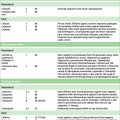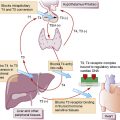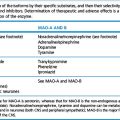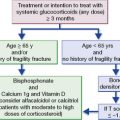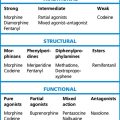Chapter 6 Official regulation of medicines
Basis for regulation
The principles of official (statutory) medicines regulation are that:
• No medicines will be marketed without prior licensing by the government.
• A licence will be granted on the basis of scientific evaluation of:
• A licence shall specify the clinical indications that may be promoted and shall be for a limited period (5 years), which is renewable on application. A regulatory authority may review the risk:benefit balance or safety of a drug at any time and restrict the licensing, or remove the drug from the market for good cause.1
• A licence may be varied (altered) by an application from the pharmaceutical company to update efficacy, safety and quality sections; safety and (less commonly) efficacy variations may be initiated by the regulatory authority.
Plainly manufacturers and developers are entitled to be told what substances are regulated and what are not,2 and what kinds and amounts of data are likely to persuade a regulatory authority to grant a marketing application (licence) and for what medical purpose. In summary, medicines regulation aims to provide an objective, rigorous and transparent assessment of efficacy, safety and quality in order to protect and promote public health but not to impede the pharmaceutical industry. Inevitably, an interesting tension exists between regulators and regulated.3
Historical background
The beginning of substantial government intervention in the field of medicines paralleled the proliferation of synthetic drugs in the early 20th century when the traditional and familiar pharmacopoeia4 expanded slowly and then, in mid-century, with enormous rapidity. The first comprehensive regulatory law that required pre-marketing testing was passed in the USA in 1938, following the death of about 107 people due to the use of diethylene glycol (a constituent of antifreeze) as a solvent for a stable liquid formulation of sulphanilamide for treating common infections.5
Other countries did not take on board the lesson provided by the USA and it took the thalidomide disaster6,7 to make governments all over the world initiate comprehensive control over all aspects of drug introduction, therapeutic claims and supply. In 1960–1961 in (West) Germany, the incidence of phocomelia in newborns was noted. The term means ‘seal extremities’ and is a deformity in which the long bones of the limbs are defective and substantially normal or rudimentary hands and feet arise on, or nearly on, the trunk, like the flippers of a seal; other abnormalities may occur. Phocomelia is ordinarily exceedingly rare. Case–control and prospective observational cohort studies in antenatal clinics where women had yet to give birth provided evidence incriminating a sedative and hypnotic called thalidomide; it was recommended for use in pregnant women, although it had not been tested on pregnant animals. The worst had happened: a trivial new drug was the cause of the most grisly disaster in the short history of modern scientific drug therapy. Many thalidomide babies died, but many live on with deformed limbs, eyes, ears, heart and alimentary and urinary tracts. The world total of survivors was probably about 10 000.
In the UK, two direct consequences were the development of a spontaneous adverse drug reaction reporting scheme (the Yellow Card system) and legislation to provide regulatory control on the safety, quality and efficacy of medicines through the systems of standards, authorisation, pharmacovigilance (see p. 52) and inspection (Medicines Act 1968). A further landmark was the establishment of the Committee on Safety of Medicines in 1971 (from 2006 renamed the Commission on Human Medicines) to advise the Licensing Authority in the UK. In 1995, the new European regulatory system was introduced (see below).
Despite these protective systems, other drug disasters occurred. In 1974 the β-blocking agent practolol was withdrawn because of a rare but severe syndrome affecting the eyes and other mucocutaneous regions in the body (not detected by animal tests), and in 1982 benoxaprofen, a non-steroidal anti-inflammatory drug, was found to cause serious adverse effects including onycholysis and photosensitivity in elderly patients. More recent examples that have gained wide public notice include the association of serotonin-specific reuptake inhibitors with increased risk of suicide behaviour and that of cyclo-oxygenase I and II inhibitors with cardiovascular disease (see p. 243).
Current medicines regulatory systems
All countries where medicines are licensed for use have a regulatory system. When a pharmaceutical company seeks worldwide marketing rights, its programmes must satisfy each of the following: the Food and Drug Administration (FDA) of the USA; the European regulations and guidance issued by the Commission and overseen by the European Medicines Agency8 (EMA); and the Japanese Pharmaceutical Affairs Bureau. The national regulatory bodies of the individual European Union members remain in place but work with the EMA, which acts as a single source of authority. National licences can still be granted through individual member states, which maintain particular responsibility for their own public health issues. Significant harmonisation of practices and procedures at a global level was also achieved through the International Conferences on Harmonisation (ICH) involving Europe, Japan and the USA.
In the European Union drugs can be licensed in three ways:
1. The centralised procedure allows applications to be made directly to the EMA; applications are allocated for assessment to one member state (the rapporteur) assisted by a second member state (co-rapporteur). Approval of the licence is then binding on all member states. This approach is mandatory for biotechnology products and for certain new medicinal products.
2. The mutual recognition (or decentralised) procedure allows applicants to nominate one member state (known as a reference member state), which assesses the application and seeks opinion from the other (concerned) member states. Granting the licence will ensure simultaneous mutual recognition in these other states, provided agreement is reached among them. There is an arbitration procedure to resolve disputes.
3. A product to be marketed in a single country can have its licence applied for through the national route.
The European systems are conducted according to strict timelines and written procedures. Once a medicine has been licensed for sale by one of the above procedures, its future regulatory life remains within that procedure. Safety updates have to be reviewed every 6 months for the first 2 years, then annually until 5 years. Thereafter, there may be a second renewal at 10 years, if safety issues demand.1 The renewal of a licence is primarily the responsibility of the pharmaceutical company, but requires approval from the regulatory authority. This provides the opportunity for companies to review, in particular, the safety aspects to keep the licence in line with current clinical practice. Any major changes to licences must be made by variation of the original licence (safety, efficacy or quality; see below) and supported by data, which for a major indication can be substantial.
Requirements
Authorisation for clinical trials in the UK
The EU Clinical Trial Directive 2001/20/EC harmonised the laws and administrative procedures relating to the regulation of clinical trials across Europe and replaced the previous legislation in each of the separate member states. It is implemented in the UK through the Medicines for Human Use (Clinical Trials) Regulations.9 All interventional clinical trials of an investigational medical product (so-called CTIMPs), including human volunteer trials, require regulatory approval through a Clinical Trial Authorisation (CTA) application that must include summaries of preclinical, clinical and pharmaceutical data. For most trials a response must be provided by the regulatory authority within 30 days, with a maximum of up to 60 days. There is a complementary process to allow for amendments to the original application, and there is a requirement to notify each involved regulatory agency when the trial is completed.
Regulatory review of a new drug application
A drug regulatory authority requires the following:
• Quality checks. Full information on manufacturing process including purity, stability, formulation.
 tests carried out in animals to allow some prediction of potential efficacy and safety in humans (see Ch. 4).
tests carried out in animals to allow some prediction of potential efficacy and safety in humans (see Ch. 4).• Clinical (human) tests (Phases 1, 2, 3).
• Knowledge of the environmental impact of pharmaceuticals. Regulatory authorities expect manufacturers to address this concern in their application to market new chemical entities. Aspects include manufacture (chemical pollution), packaging (waste disposal), pollution in immediate use, e.g. antimicrobials and, more remotely, drugs or metabolites entering the food chain or water where use may be massive, e.g. hormones.
The full process of regulatory review of a truly novel drug (new chemical entity) may take months.
Regulatory review
1. Examination of preclinical data to determine whether the drug is safe enough to be tested for (predicted) human therapeutic efficacy.10
2. Examination of the clinical studies to determine whether the drug has been shown to be therapeutically effective with safety appropriate to its use.11
Central to the decision to grant a marketing authorisation is the assessment procedure undertaken by professional medical, scientific, statistical and pharmaceutical staff at one of the national agencies. In the UK these are employed as civil servants within the Medicines and Healthcare products Regulatory Agency (MHRA) and are advised by various independent expert committees.12
Drugs used to prevent a long-term morbidity, e.g. stroke in hypertensive patients, can be proven effective only in outcome trials that are usually considered too expensive even to start until marketing of the drug is guaranteed. The effect of a drug at preventing rare occurrences requires many thousands of patients, more than are usually studied during development. Similarly rare adverse events cannot be detected prior to marketing, and it would be unethical to expose large numbers of trial patients to a novel drug for purely safety reasons.13
Post-licensing responsibilities
The pharmaceutical company is predominantly interested in gaining as widespread a usage as fast as possible, based on the efficacy of the drug demonstrated in pre-registration trials. The regulatory authorities are more concerned with the safety profile of the drug and protection of public health. The most important source of safety data once the drug is in clinical use is spontaneous reporting of adverse events, which will generate ‘signals’ and raise suspicion of infrequent but potentially serious adverse events caused by the drug.14 Proving the causal link from sporadic signals can be extremely difficult, and is entirely dependent on the number and quality of these spontaneous reports. In the UK, these reports are captured through the Yellow Card system (see p. 52), which may be completed by doctors, nurses or pharmacists and, most recently, by patients. Other countries have their own systems. The importance of encouraging accurate spontaneous reporting of adverse events cannot be overemphasised.
Since 2005, companies are required to submit at the time of licence application the details of subsequent review and management systems. This may include a post-authorisation surveillance study (PASS). Other studies investigating the safety of a medicine that are not directly sponsored by the manufacturer may be identified from various organisations. These include the Drug Safety Research Unit (Southampton, UK) using Prescription Event Monitoring (PEM), the Medicines Monitoring Unit (MEMO) (Tayside, UK), and the use of computerised record linkage schemes (in place in the USA for many years) such as the UK General Practice Research Database (GPRD) at the MHRA. All these systems have the important capacity to obtain information on very large numbers of patients (10 000–20 000) in observational cohort studies and case–control studies, complementing the spontaneous reporting system (see Ch. 4).
Two other important regulatory activities that affect marketed drugs are:
Variations are substantial changes instigated usually by pharmaceutical companies, but sometimes by the regulatory authority, to the efficacy, safety or quality aspects of the medicine. Most significant variations involve additions to indications or dosing regimens, or to the warnings and contraindication sections of the SPC. They need to be supported by evidence and undergo formal assessment.
Discussion
It would also seem sensible to require developers to prove that a new drug is not only effective but is actually needed in medicine before it is licensed. Strong voices are now arguing that a risk:benefit assessment of new (candidate) medicines against old medicines should be part of a regulatory application.15,16 It is argued that a novel drug finds its place only after several, sometimes many, years, and to delay licensing is simply impracticable on financial grounds. Thus a ‘need clause’ in licensing is not generally practicable if drug developers are to stay in that business. This is why comparative therapeutic studies of a new drug with existing drugs are not required for licensing in countries having a research-based pharmaceutical industry. A ‘need clause’ is, however, appropriate for economically deprived countries (see World Health Organization Essential Drugs Programme); indeed, such countries have no alternative.
The licensing authority in the UK is not concerned with the pricing of drugs or their cost-effectiveness. The cost of medicines does, however, concern all governments, as part of the rising costs of national health services. A serious attempt to control costs on drug usage by the introduction of national guidelines on disease management (including the use of individual drugs) and the appraisal of new and established medicines for cost-effectiveness now operate through a government-funded body called the National Institute for Health and Clinical Excellence (NICE). The present text includes a section on what is called health technology assessment by the Chairman of NICE (Chapter 5). In addition, elements of guidance notes issued by NICE appear throughout the book.
Licensed medicines for unlicensed indications
Doctors may generally prescribe any medicine for any legitimate medical purpose, when they judge it to be in the best interest of the patient.17 But if they use a drug for an indication that is not formally included in the product licence (‘off-label’ use) they would be wise to think carefully and to keep particularly good records, for, if a patient is dissatisfied, prescribers may find themselves having to justify the use in a court of law. (Written records made at the time of a decision carry substantial weight, but records made later, when trouble is already brewing, lose much of their power to convince, and records that have been altered later are quite fatal to any defence.) Manufacturers are not always willing to go to the trouble and expense of the rigorous clinical studies required to extend their licence unless a new use is likely to generate significant profits. They are prohibited by law from promoting an unlicensed use. Much prescribing for children is in fact ‘off licence’ because clinical trials are usually conducted in adults and information sufficient for regulatory purposes in children does not exist. Paediatricians have to use adult data, scaled by body-weight or surface area, together with their clinical experience. To address this issue, companies are now required to conduct trials in children.
Decision-taking
The responsibility to protect public health on the one hand, yet to allow timely access to novel medicines on the other, is one shared by drug regulators, expert advisory bodies and developers. It is complicated by an ever-increasing awareness of the risks and benefits (real or perceived) of medicines by the general public. Some new medicines are registered with the high expectation of effectiveness and with very little safety information; rare and unpredictable adverse events may take years to appear with sufficient conviction that causality is accepted. In taking decisions about drug regulation, it has been pointed out that there is uncertainty in three areas:18
Regulators are influenced not only to avoid risk but also to avoid regret later (regret avoidance), and this consideration has a profound effect whether or not the decision-taker is conscious of it; it promotes defensive regulation. Regulatory authorities are frequently accused of being too cautious, and responsible, at least in part, for the stagnation in new drug development.
It is self-evident that it is much harder to detect and quantify a good that is not done than it is to detect and quantify a harm that is done. Therefore, although it is part of the decision-taker’s job to facilitate the doing of good, the avoidance of harm looms larger. Attempts to blame regulators for failing to do good due to regulatory procrastination, the ‘drug lag’,19 do not induce the same feelings of horror in regulators and their advisory committees as are induced by the prospect of finding they have approved a drug that has, or may have, caused serious injury and that the victims are about to appear on television.20 The bitterness of people injured by drugs, whether or not there is fault, could be much reduced by the institution of simple non-adversarial arrangements for compensation.
Counterfeit drugs
The public has a role to play. A patient with obsessive–compulsive disorder was receiving treatment with olanzapine. His custom was rigorously to polish the tablets each day before consumption. After one of his repeat prescriptions, his polishing became ever more thorough until the blue colour started to wear off the tablets. He rang the company to complain. Instead of being dismissed as a touch eccentric, the company investigated and found the tablets to be – well, not true blue.21
Complementary and alternative medicine
The broad term complementary and alternative medicine (CAM) covers a range of widely varied diagnostic and therapeutic practices; it includes herbal and traditional (mainly Chinese) medicines, homoeopathic remedies and dietary supplements.22 The public demand for these substances is substantial and the financial interests are huge: annual global sales of complementary medicines have reached an estimated US$83 billion. The efficacy, safety and quality of herbal23 and homoeopathic24 preparations have been critically reviewed. Physicians need to be aware that their patients may be taking CAM preparations, not least because of the risk of adverse reactions and drug–drug interactions, e.g. enzyme induction with St John’s wort (Hypericum perforatum).25
Medicines regulation: the future
• The promotion and protection of public health: the obligations to ministers, the public and industry are unchanged but regulators will operate in an environment in which the public increasingly expects more effective medicines without sacrifice of safety. Some results of this are already apparent.
• A wider and more rapid international pharmacovigilance.26
• Greater transparency in regulatory decision-making.
• More biological, especially therapeutic, antibodies.
• Pharmacogenetics (see Chap. 8).
• The results of assessed applications for new medicines will see a shift from complex technical to patient-oriented documents with clear expressions of risk and benefit.
• A widening of the availability of medicines for chronic disorders through pharmacies, by nurses and other non-medical professionals, and directly to the public.
• Attention to the regulation of medicines for special populations, e.g. the licensing of old and new medicines for children.
Giezen T.J., Mantel-Teeuwisse A.K., Straus S.M., Schellekens H., et al. Safety-related regulatory actions for biologicals approved in the United States and the European Union. J. Am. Med. Assoc.. 2008;300:1887–1896.
Permanand G., Mossialos E., McKee M. Regulating medicines in Europe: the European Medicines Agency, marketing authorisation, transparency and pharmacovigilance. Clin. Med. (Northfield Il). 2006;6(1):87–90.
Raine J., Wise L., Blackburn S., et al. European perspective on risk management and drug safety. Clin. Pharmacol. Ther.. 2011;89:650–654.
Report. The licensing of medicines in the UK. Drug. Ther. Bull. 2009;47(4):45–48.
Rudolf P.M., Bernstein I.B.G. Counterfeit drugs. N. Engl. J. Med.. 2004;350:1384–1386.
Zarin D.A., Tse T., Ide N.C. Trial registration at ClinicalTrials.gov between May and October 2005. N. Engl. J. Med.. 2005;353:2779–2787.
1 As from 2006, the European Community regulations requires one renewal at 5 years and a second at 10 years only if safety issues demand it, with safety update reviews every 3 years after licensing.
2 It is obviously impossible to list substances that will be regulated if anybody should choose one day to synthesise them. Therefore regulation is based on the supply of ‘medicinal products’, i.e. substances are regulated according to their proposed use; and they must be defined in a way that will resist legal challenge (hence the stilted regulatory language). The following terms have gained informal acceptance for ‘borderline substances’ (which may or may not be regulated): nutriceutical – a food or part of a food that provides medicinal benefits; cosmeceutical – a cosmetic that also has medicinal use.
3 However much doctors may mock the bureaucratic ‘regulatory mind’, regulation provides an important service and it is expedient that doctors should have some insight into its working and some of the very real problems faced by public servants and their advisory committees who are trying to do good without risking losing their jobs and reputations.
4 Pharmacopoeia: a book (often official) listing drugs and, for example, their standards of purity, manufacture, assay and directions for use.
5 Report of the Secretary of Agriculture submitted in response to resolutions in the House of Representatives and Senate (USA) 1937 Journal of the American Medical Association 111:583, 919. Recommended reading. A similar episode occurred as recently as 1990–1992 (Hanif M, Mobarak M R, Ronan A et al 1995 Fatal renal failure caused by diethylene glycol in paracetamol elixir: the Bangladesh epidemic. British Medical Journal 311:88–91). Note: diethylene glycol is cheap.
6 Mellin G W, Katzenstein M 1962 The saga of thalidomide. Neuropathy to embryopathy, with case reports of congenital anomalies. New England Journal of Medicine 267:1184–1192, 1238–1244.
7 Dally A 1998 Thalidomide: was the tragedy preventable? Lancet 351:1197–1199.
8 Formerly the European Medicines Evaluation Agency (EMEA).
9 2004 Statutory Instrument No. 1031. The Stationery Office, UK.
10 The licensing authority in England is the health minister, though in practice the Medicines and Healthcare products Regulatory Agency (MHRA) is the executive arm within the Department of Health.
11 Common sense dictates that what, in regulatory terms, is ‘safe’ for leukaemia would not be ‘safe’ for anxiety.
12 Breckenridge A M 2004 The changing scene of the regulation of medicines in the UK. British Journal of Clinical Pharmacology 58:571–574.
13 After marketing, doctors should use a new drug only when they believe it an improvement (in efficacy, safety, convenience or cost) on the older alternatives.
14 Waller P C, Bahri P 2002 Regulatory pharmacovigilance in the EU. In: Mann R, Andrews E (eds) Pharmacovigilance. John Wiley, Chichester, pp. 183–194.
15 Garratini S, Bertile V 2004 Risk:benefit assessment of old medicines. British Journal of Clinical Pharmacology 58:581–586.
16 Motola D, De Ponti F, Rossi P et al 2005 Therapeutic innovation in the European Union: analysis of the drugs approved by the EMEA between 1995 and 2003. British Journal of Clinical Pharmacology 59(4):457–478.
17 In many countries this excludes supply of drugs such as heroin or cocaine for controlled/supervised maintenance of drug addicts. In the UK such supply is permitted to doctors.
18 Lord Ashby 1976 Proceedings of the Royal Society of Medicine 69:721.
19 Nevertheless, regulatory authorities have responded by providing a facility for ‘fast-tracking’ drugs for which clinical need may be urgent, e.g. AIDS (see above).
20 The very last thing a drug regulator wishes to be able to say is, like Lord Byron (1788–1824), on the publication of his poem ‘Childe Harold’s Pilgrimage’, ‘I awoke one morning and found myself famous’.
21 The term may originate from the blue cloth made in the English city of Coventry in the late Middle Ages; it resisted fading on washing and thus remained ‘true’, i.e. reliable.
22 Baber N S 2003 Complementary medicine, clinical pharmacology and therapeutics [editorial]. British Journal of Clinical Pharmacology 55:225.
23 Barnes J 2003 Quality, efficacy and safety of complementary medicines; fashions, facts and the future. British Journal of Clinical Pharmacology Part I: Regulation and Quality 55: 226–233; Part II: Efficacy and Safety 55:331–340.
24 Ernst E 2002 A systematic review of systematic reviews of homeopathy. British Journal of Clinical Pharmacology 54:577–582.
25 Henderson L, Yue Q Y, Bergquist C et al 2002 St John’s wort (Hypericum perforatum): drug interactions and clinical outcomes. British Journal of Clinical Pharmacology 54:349–356.
26 Waller P C, Evan S J W 2003 A model for the future conduct of pharmacovigilance. Pharmacoepidemiology and Drug Safety 12:17–19.




 ), in formularies. The regulatory authority communicates emerging data on safety of drugs to doctors through letters or papers in journals, through specialist journals, e.g. Current Problems in Pharmacovigilance, in the UK, and for very significant issues by direct (‘Dear Doctor’) letters and fax messages.
), in formularies. The regulatory authority communicates emerging data on safety of drugs to doctors through letters or papers in journals, through specialist journals, e.g. Current Problems in Pharmacovigilance, in the UK, and for very significant issues by direct (‘Dear Doctor’) letters and fax messages.